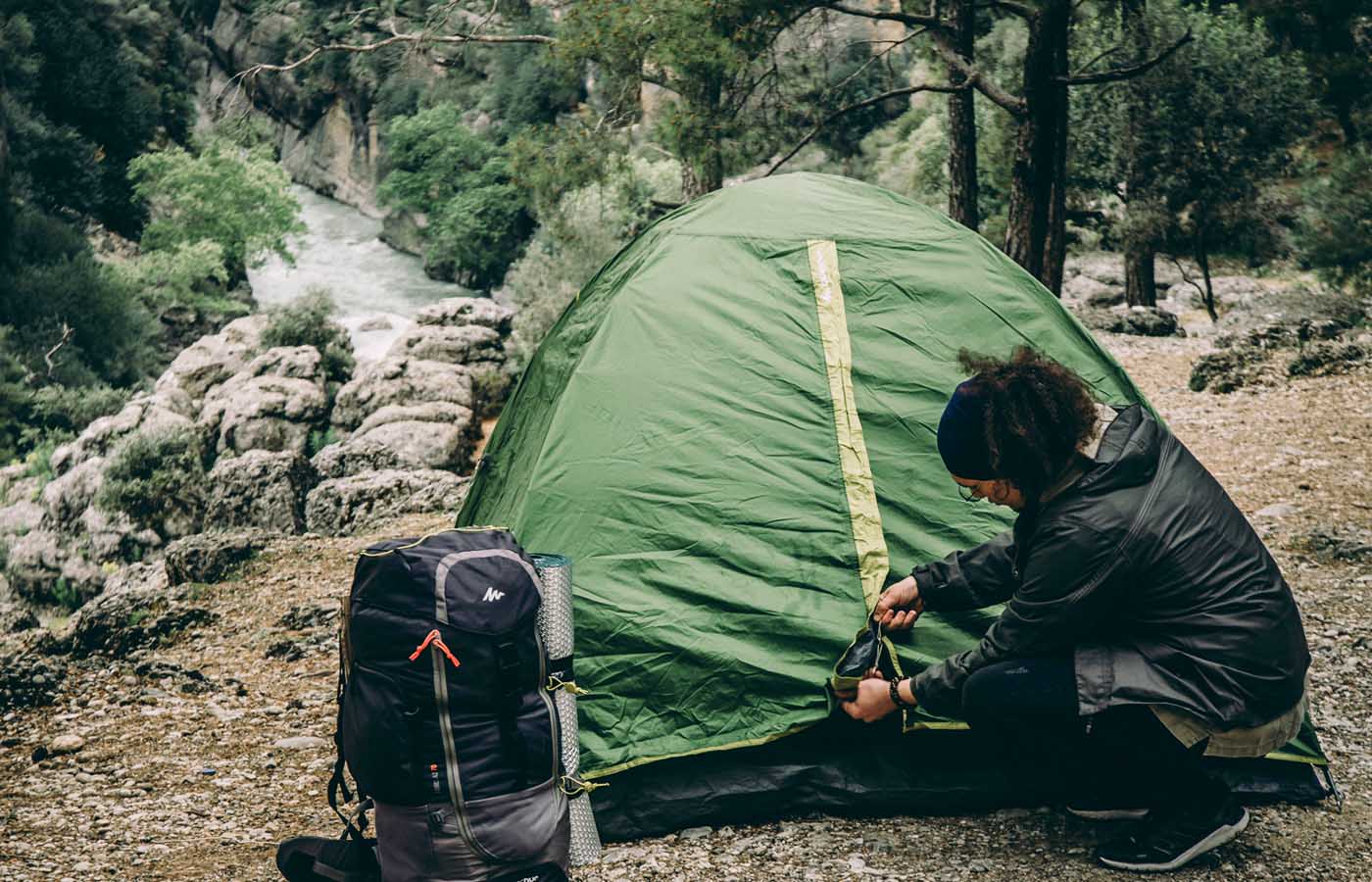I often forget that not everyone is well versed in the ways of the outdoors equipment. Some of you might be city dwellers building up the nerve to venture out of city bounds, and then others may well know tents in general, but not all of the terminology down to the nitty gritty.
The materials of a tent and its parts is a mix of weight, strength, durability, flexibility. The price will lower or rocket sky high accordingly. You need to think about how you’ll use your tent most often and what’s appropriate, in terms of budget too. So let’s get to it. Here are the basic elements of a standard tent. Avoid tent confusion, (that’s not a clinical term by the way) and use this brief guide to help you make the best decision when searching for a tent to buy.
Inner Tent, Tent Body or Canopy – the main part of the tent that could be a single space or a divided space. Usually, when tents come with a rainfly, this inner “wall” will not be waterproof. Usually the fabric is made with a certain level of “denier” – the thickness of individual fibers used to weave the fabric – the higher the denier, the greater the durability and wear-resistance. It’s important that the inner tent of a “double wall” tent is breathable with mesh and ventilation.
Groundsheet or Floor Fabric – the floor part of the tent that is the barrier between you and the ground. The floor of the tent should have some sort of waterproofing and a higher denier. In general, the groundsheet or floor, slopes slightly up the side of the tent to reduce water from getting in.
Rainfly or Fly Sheet – tents that come with rainflies are referred to as “double-wall” (those without a rainfly are called “single-wall”). A rainfly should have waterproofing, but obviously won’t be breathable. The rainfly will protect the inner tent from getting wet as water will run down the sides and onto the surrounding ground.
Poles – the poles are like the skeleton of the tent providing structural support. Poles can be made from traditional materials like fiber glass, aluminum, or carbon, and even from more advanced space-age materials – the range of which provides a mixture between strength, flexibility and weight. The poles will collapse for storage and portability.
Tent Pegs or Stakes – these are stakes for fastening down your tent to the ground, there will be grommets or material loops on the tent through which you put these. Some tent pegs may require a mallet (hammer or rock) for pounding into hard ground, but usually you can secure them by hand.
Guy Ropes – used to pull the fabric of the tent in an outwards fashion and full shape. Along with the tent pegs, the guy ropes provides additional stability and support for the tent, especially in windy conditions. You might affix the guy ropes with tent pegs provided or to some other object, like a nearby tree.
Vestibule – when the inner tent and rainfly are set up correctly, there could possibly be a small space (with no floor) outside of the main door of the inner tent. It’s additional space where you can leave dirty or wet shoes and other equipment. This porch-like area is often used for cooking too. Vestibules are very useful, but not all tents have this extra space.
Air Vents or Ventilation – the air vents in “double-wall” tents are often made of a mesh material and ventilate the tent, allowing condensation to evaporate. Proper ventilation is a key component of a tent – for both single-wall and double-wall. Ventilation provides better comfort and prevents mold from growing inside.
Footprint or Ground Tarp – footprints may or may not be included with the purchase of a tent. Some are made specifically to go hand in hand with your tent. And alternative option is creating a makeshift one with a tarp (although often heavier and bulky). Footprints are good to have because the protect the tent floor from ground that is wet, cool or abrasive. A footprint helps to prolong the life of the tent. They are also useful to have when using the minimalist pitch options of a tent.
A brief word about single-wall and double wall tents
Generally speaking, single-wall tents work great in cold alpine climates that are high in elevation and dry. The double-wall tents are better for areas where it rains a lot or where there’s high humidity, and also for storing extra gear.



